Simulating Dingo¶
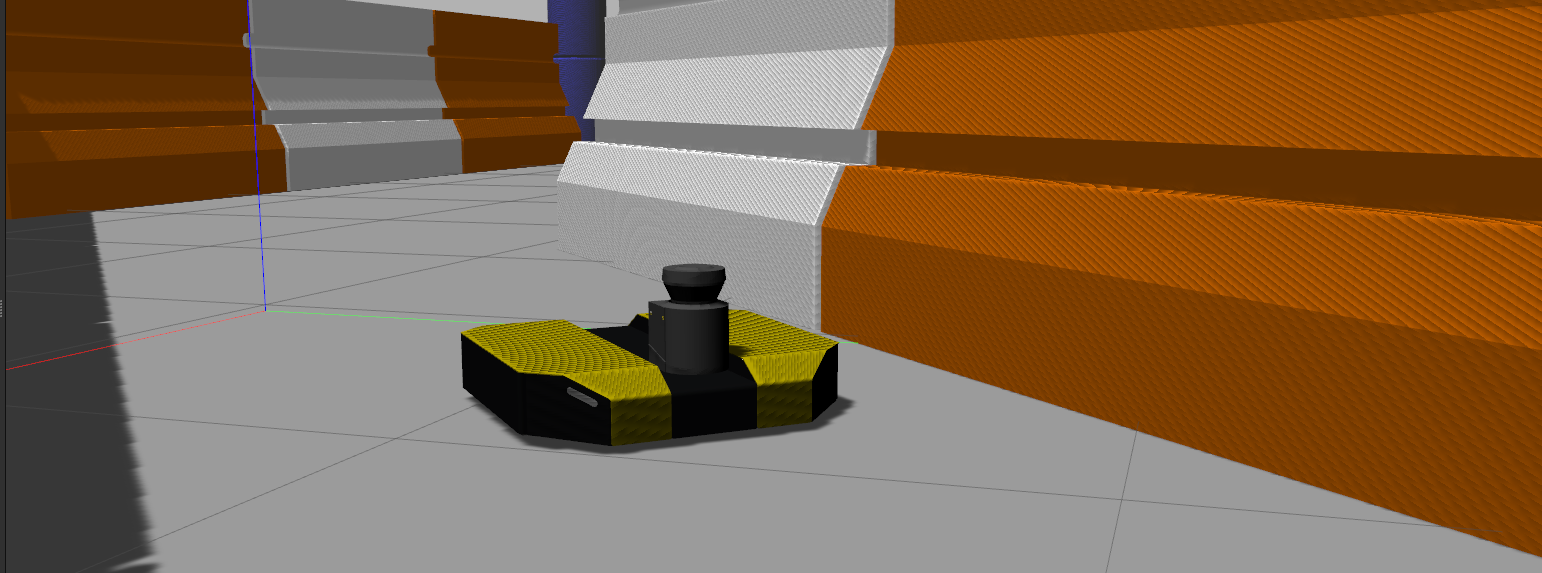
Whether you actually have a physical Dingo robot or not, the Dingo simulator is a great way to get started with ROS robot development. In this tutorial, we will go through the basics of starting Gazebo and rviz and how to drive your Dingo around.
Note
Before you can use this tutorial, make sure you have installed Dingo’s software
Launch Gazebo¶
Gazebo is a common simulation tool used in ROS. Dingo’s model in Gazebo include reasonable approximations of its dynamics, including wheel slippage, skidding, and inertia. To launch a simulated Dingo in a simple example world, run the following command:
roslaunch dingo_gazebo dingo_world.launch
You should see the following window appear, or something like it. You will see a base Dingo spawned with no additional sensors. You can adjust the camera angle by clicking and dragging while holding CTRL, ALT, or the shift key:
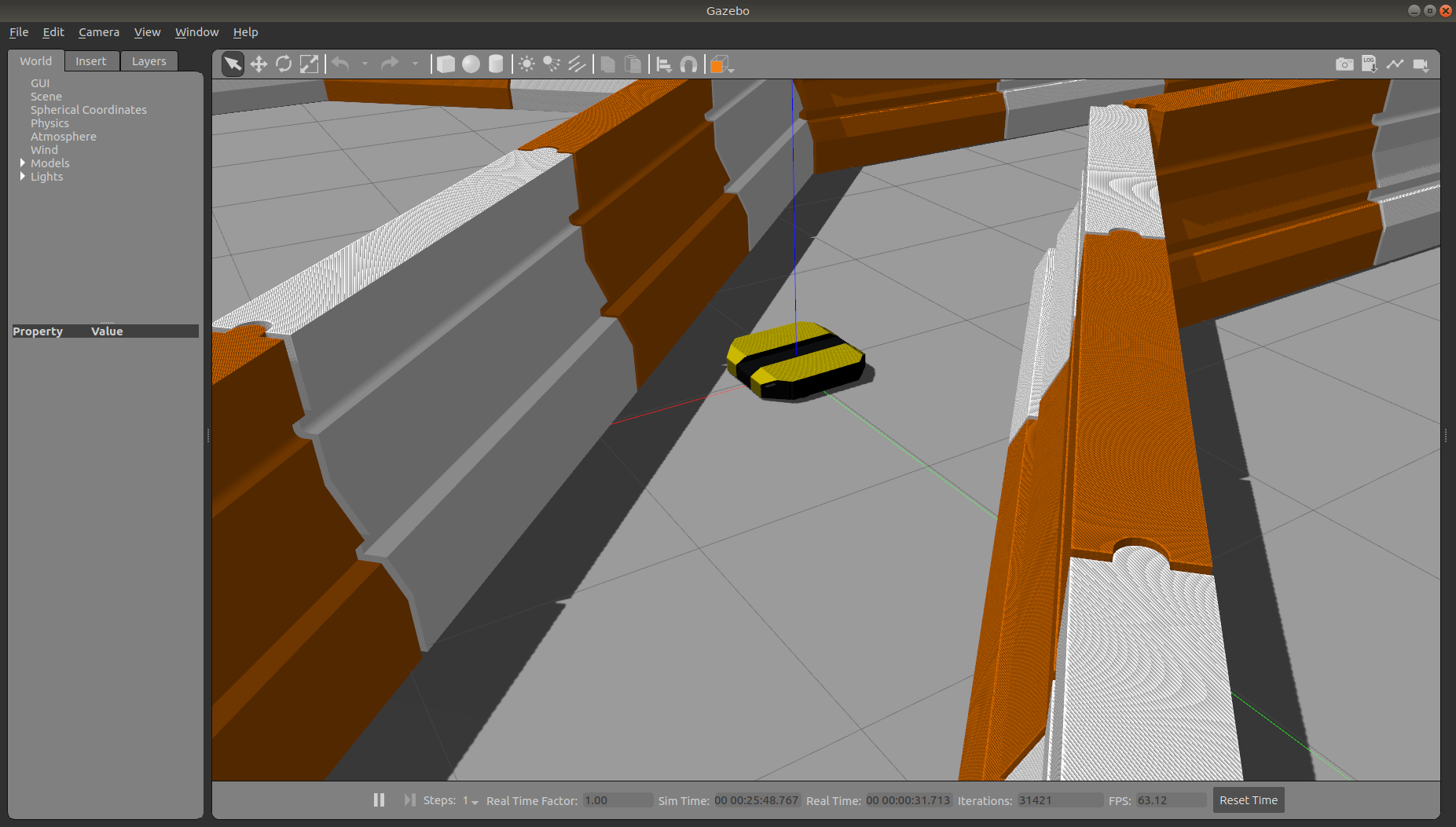
The window which you are looking at is the Gazebo Client. This window shows you the “true” state of the simulated world which the robot exists in. It communicates on the backend with the Gazebo Server, which is doing the heavy lifting of actually maintaining the simulated world. At the moment, you are running both the client and server locally on your own machine, but some advanced users may choose to run heavy duty simulations on separate hardware and connect to them over the network.
Note
When simulating, you must leave Gazebo running. Closing Gazebo will prevent other tools, such as rviz (see below) from working correctly.
Simulation Configs
Note that like Dingo itself, Dingo’s simulator comes in multiple flavours called configs. A common
one which you will need often is the front_laser config. If you close the Gazebo window, and then CTRL-C out of the terminal process, you can re-launch the simulator with a specific config:
roslaunch dingo_gazebo dingo_world.launch config:=front_laser
You should now see the simulator running with the simulated SICK LMS111 laser present:
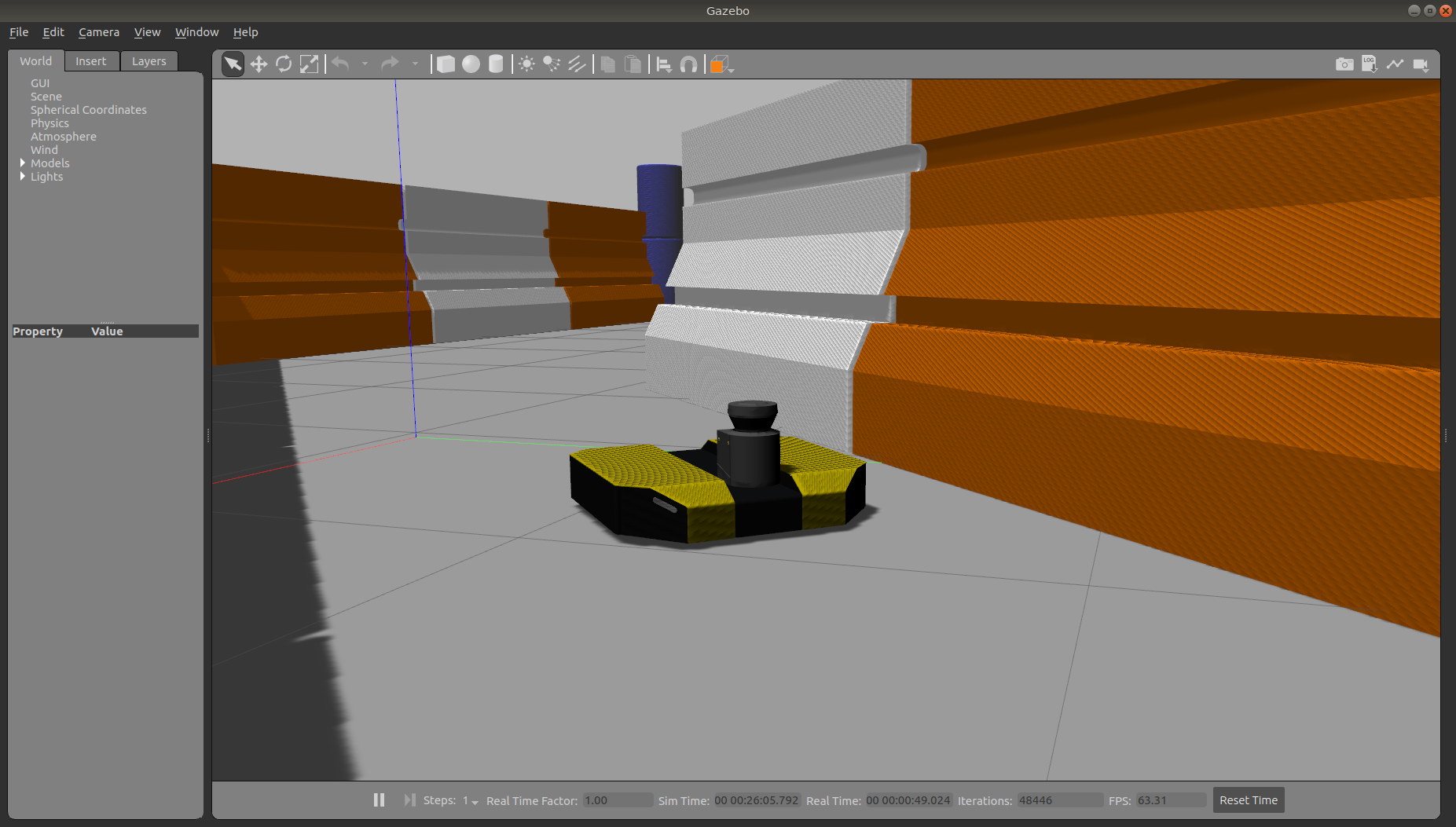
Gazebo not only simulates the physical presence of the laser scanner, it also provides simulated data which reflects the robot’s surroundings in its simulated world. We will visualize the simulated laser scanner data shortly.
Launch rviz¶
The next tool we will encounter is rviz. Although superficially similar in appearance to Gazebo, rviz has a very different purpose. Unlike Gazebo, which shows the reality of the simulated world, rviz shows the robot’s perception of its world, whether real or simulated. So while Gazebo won’t be used with your real Dingo, rviz is used with both.
You can using the following launch invocation to start rviz with a pre-cooked configuration suitable for visualizing any standard Dingo config:
roslaunch dingo_viz view_robot.launch
You should see rviz appear:
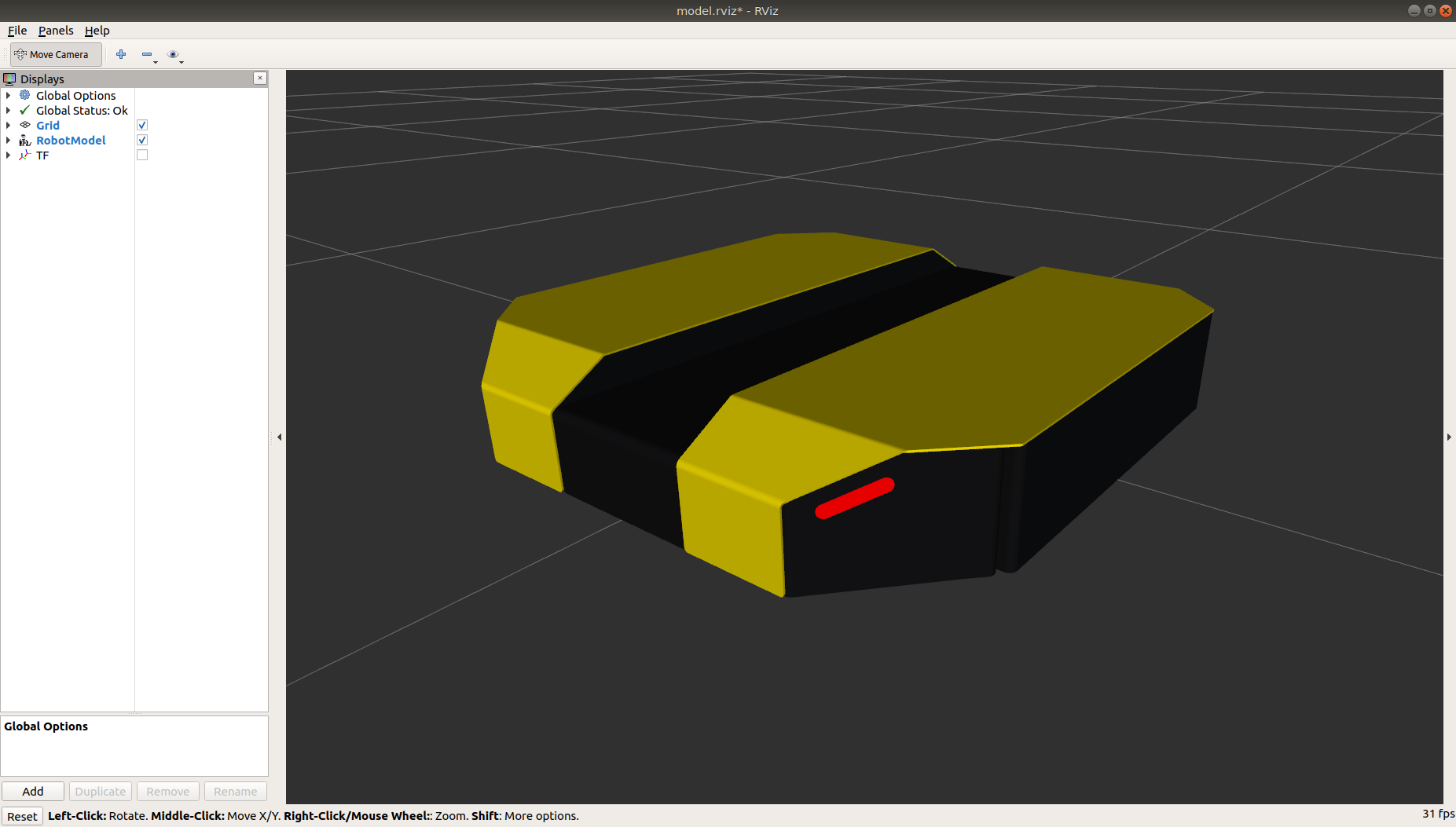
The rviz display only shows what the robot knows about its world, which presently, is nothing. Because the robot doesn’t yet know about the barriers which exist in its Gazebo world, they’re not shown here.
Driving with Interactive Controller¶
Rviz will also show Dingo’s interactive markers around your Dingo’s model. These will appear as a blue ring and red arrows. Depending on your robot, there will also be green arrows. If you don’t see them in your rviz display, select the Interact tool from the top toolbar and they should appear.
Drag the red arrows in rviz to move in the linear x direction, and the blue circle to move in the angular z direction. If your robot supports lateral/sideways movement, you can drag the green arrows to move in the linear y direction. Rviz shows you Dingo moving relative to its odometric frame, but it is also moving relative to the simulated world supplied by Gazebo. If you click over to the Gazebo window, you will see Dingo moving within its simulated world. Or, if you drive real Dingo using this method, it will have moved in the real world.
Visualizing Sensors¶
The rviz tool is capable of visualizing many common robotic sensors, as well as other data feeds which can give us clues as to what the robot is doing and why. A great place to start with this is adding the LaserScan plugin to visualize the laser scans being produced by the simulated LMS111. In the left panel, click the “Add” button, then select the “Topics” tab, and then select the front/scan topic:
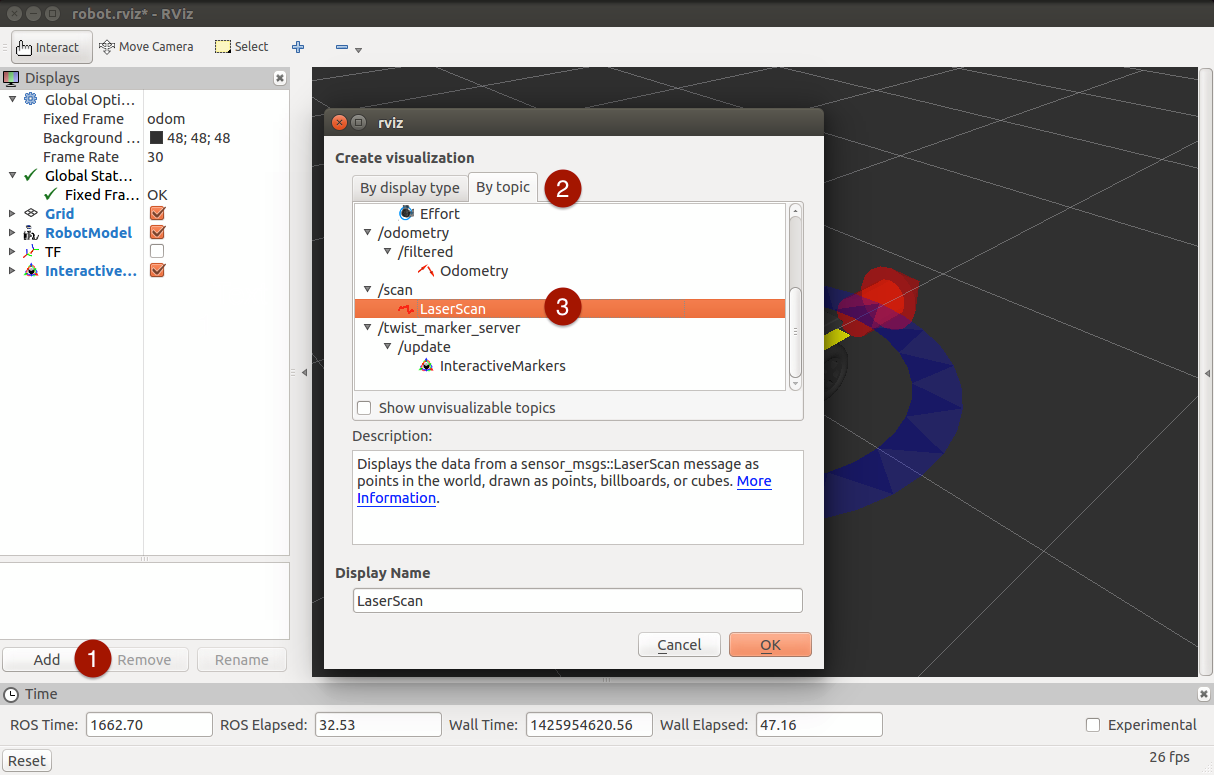
Click OK, and you should see laser scan points now visible in the rviz window, relative to the robot:
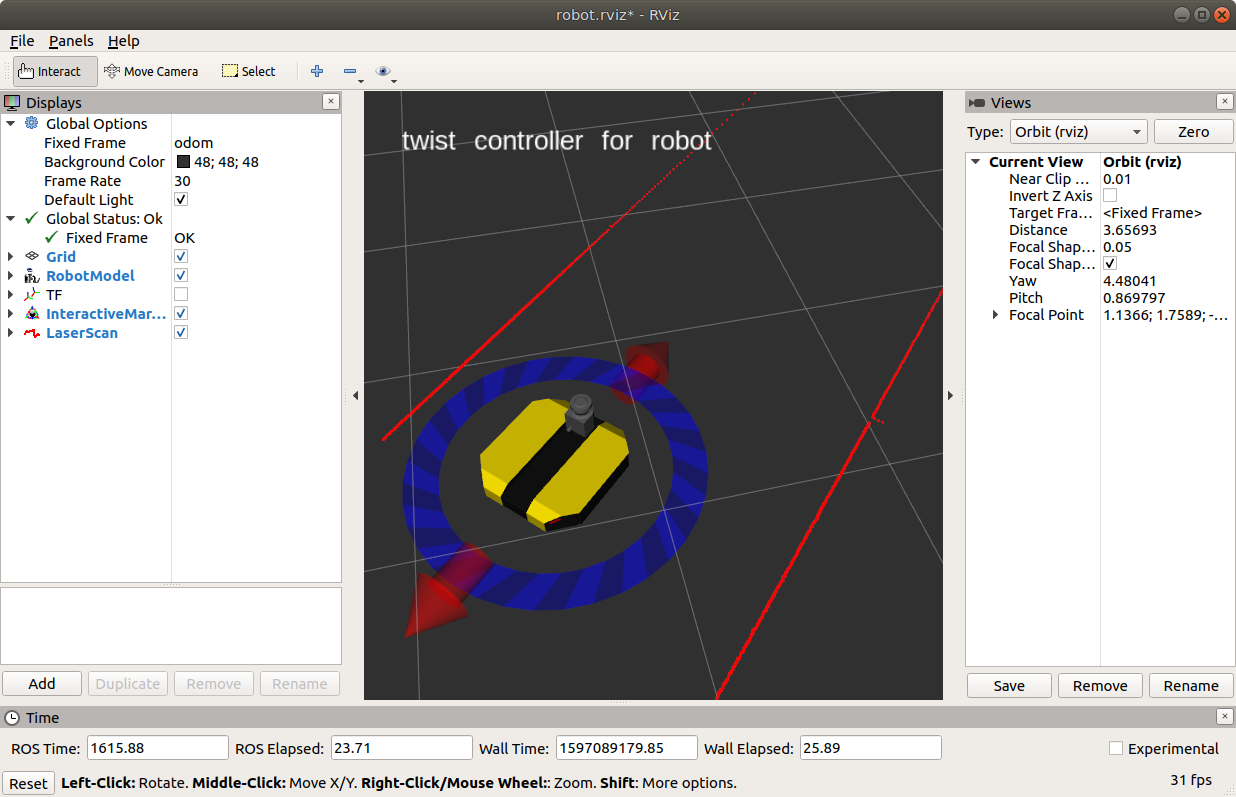
If you use the interactive markers to drive around, you’ll notice that the laser scan points move a little bit but generally stay where they are. This is the first step toward map making using gmapping, which is covered in the next tutorial, Navigating with Dingo.